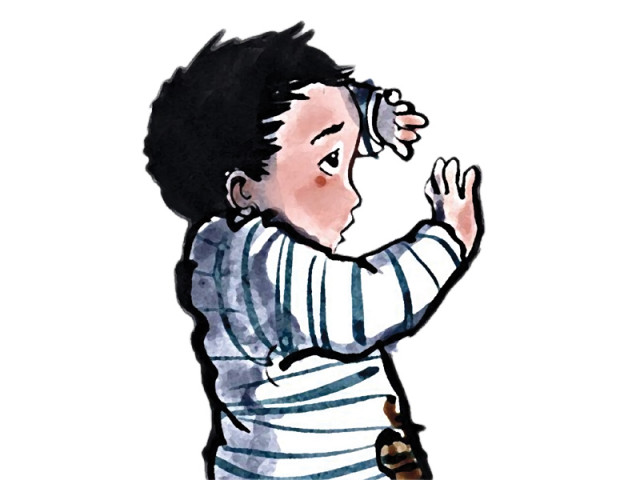Imagine a child born in Pakistan today. At the time they are adult, they will only be able to reach 41 percent of their potential due to challenges they face, such as lack of access to good health, education and nutrition, early stimulation and responsive care and safety and safety.
The greatest loss of this potential occurs in the first few years of life. It is as if a child starts life with the potential of a high -performance sports car, but because they do not get the right fuel, maintenance or exercise, he/she can only end up acting as a worn Dabba Suzuki running with less than half its capacity.
Children who get the best start in life are more likely to be happy, productive and socially integrated young people and adults. Therefore, the first few years of life are extremely important in human development. It is a time when more than a million neural connections are formed every second when children interact with their environments – a pace that should never be repeated.
The quality of a child’s early experiences, especially the care and stimulation they get, makes a critical difference in brain development and sets the basis for behavior, learning, health and ultimately opportunities for life.
This makes early childhood a time of great opportunity, but also at great risk, because when children do not get the right conditions to thrive, the consequences can be serious for them and their families as well as to society as a whole.
A groundbreaking study by researchers from Aga Khan University and the University of British Columbia in Canada, published in Early Childhood Research Quarterly Journal, studied development health for children in the early years in Pakistan. The study examined thousands of children three to eight years old across 397 public schools in Sindh and found that one in four children in Pakistan risks poor development, and one in ten is in danger in at least one of the development domains such as physical, social-exercise or cognitive development.
The results also showed that children who experienced social disadvantages, such as poverty, language, being of minority backgrounds and lower levels of maternal education were more at risk of poor development.
We know that children who grow up in poverty facing several challenges, including inadequate nutrition, uncertain housing conditions and lack of opportunities to play and learning, often have physical and mental health problems. In addition to these physical conditions, parents’ stress due to income affects uncertainty and lack of education also negative family dynamics, custody and daily interactions with children.
Worse, it is more likely that these children who face adverse conditions in early childhood, transfer these beefers to future generations and continue the intergenerational cycle of poverty.
Children who spoke only non-dominant languages, except for Urdu, Sindhi and Punjabi in the study, were shown to do worse in social skills and cognitive and language development. Research has shown that children’s development and well -being are positively affected when learning and receiving care in their native language.
Additional protective factors such as household wealth, higher levels of mother education and a nourishing home environment characterized by activities such as reading, storytelling and playing were less common in homes where a minority or an original language was spoken.
These problems, from inadequate nutrition and insecure home to parents’ stress and language barrier, are not isolated problems. Instead, they highlight a systemic problem. Proof shows that in countries where social and human development is not prioritized, children remain at risk of poor development or not achieve their full development potential. These disadvantages mean that some children are forced to carry more weight and skip more obstacles than others in life, creating unnecessary stress and strain on children, their families and their offspring. It makes one wonder – is it a child’s fault to be born in a poor family? Of course, the answer is definitely not. So the urgent question then becomes: What steps can we take as a society and a nation to level this play area and really give all children the strong start they deserve?
There is a saying that it takes a village to raise a child. In Pakistan, with our strong collective cultural orientation and deeply rooted values for municipal living, our society is uniquely located to be the ‘village’. This could just begin by establishing provisional, socially based early learning centers using easily accessible spaces such as a mattress, a mosque, a wedding hall or even a space or balcony in a neighbor’s home. Within these spaces, reading circles, history times and playgroups in local languages could be offered in accordance with our various cultural traditions in Pakistan in addition to the exchange of ideas and tips to be added to a child’s daily routine to enrich care. Such programs, by being deeply embedded in the local community, also offer a safe and accessible space for families, especially women to bring their children and, in turn, encourage women’s empowerment. Ultimately, these grassroots efforts can be further strengthened and institutionalized through partnerships between government, private organizations and academic institutions, ensuring sustainability and long -term impact. An appropriate example of this model is development centers in early childhood in the remote villages of chitral. These examples show that coordinated grassroots efforts from civil society can play a crucial role in giving children in Pakistan a start in life they deserve and can also supplement the efforts of the government in this regard.
Investment in the early years is not just a feel-good idea; It’s smart economy. Global estimates show that for every rupie we spend on a child’s early development thing as good nutrition, early learning and a safe and nurturing environmental can we expect a 13 times return.
Salima Kerai is a postal doctor at the Center for Global Child Health, Hospital for Sick Children



